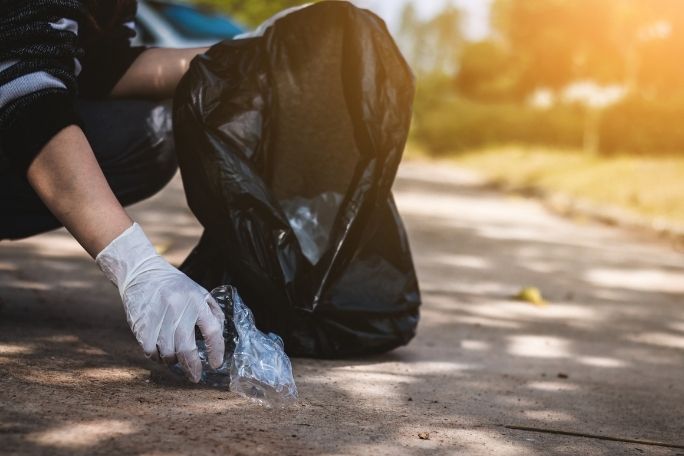Lesson summary
Students plan and complete a project that will reduce waste in either their school or the local community. This activity is an opportunity for students to identify and work with local community groups who are also interested in waste reduction programs.
Learning intentions:
Students will...
- understand that everyone in a school produces solid waste
- recognise that the school is already taking steps to reduce the amount of solid waste, but there are steps that can be taken to cut this waste even further
- working in groups can initiate and complete projects that will help cut the waste in either the school or local community.
Success criteria:
Students can...
- design and plan a project for cutting waste in their community
- deliver the project and reflect on the success of their project.
Lesson guides and printables
Lesson details
Curriculum mapping
Australian Curriculum content descriptions:
Year 7 Geography:
- Present findings, arguments and ideas in a range of communication forms selected to suit a particular audience and purpose; using geographical terminology and digital technologies as appropriate (ACHGS053)
- Reflect on their learning to propose individual and collective action in response to a contemporary geographical challenge, taking account of environmental, economic and social considerations, and predict the expected outcomes of their proposal (ACHGS054)
Year 8 Geography:
- Present findings, arguments and ideas in a range of communication forms selected to suit a particular audience and purpose; using geographical terminology and digital technologies as appropriate (ACHGS061)
- Reflect on their learning to propose individual and collective action in response to a contemporary geographical challenge, taking account of environmental, economic and social considerations, and predict the expected outcomes of their proposal (ACHGS062)
Year 9 Geography:
- The effects of the production and consumption of goods on places and environments throughout the world and including a country from North-East Asia (ACHGK068)
- Present findings, arguments and explanations in a range of appropriate communication forms, selected for their effectiveness and to suit audience and purpose; using relevant geographical terminology, and digital technologies as appropriate (ACHGS070)
- Reflect on and evaluate findings of an inquiry to propose individual and collective action in response to a contemporary geographical challenge, taking account of environmental, economic, political and social considerations; and explain the predicted outcomes and consequences of their proposal (ACHGS071)
Year 10 Geography:
- Human-induced environmental changes that challenge sustainability (ACHGK070)
- Present findings, arguments and explanations in a range of appropriate communication forms, selected for their effectiveness and to suit audience and purpose; using relevant geographical terminology, and digital technologies as appropriate (ACHGS079)
- Reflect on and evaluate findings of an inquiry to propose individual and collective action in response to a contemporary geographical challenge, taking account of environmental, economic, political and social considerations; and explain the predicted outcomes and consequences of their proposal (ACHGS080)
Syllabus outcomes: GE4-8, GE4-2, GE4-3, GE4-4, GE4-5, GE5-8, GE5-2.
General capabilities: Critical and creative thinking.
Cross-curriculum priority: Sustainability OI.3, OI.8.
Level of teacher scaffolding: Low – advisory.
Resources required
- Art materials
- Devices with internet access
- Other materials as required
- Student Worksheet
Safety: Students review the Waste Safety Code. The teacher checks the students’ plans for safety considerations before students commence their projects. The teacher supervises the projects.
Skills
This lesson is designed to build students’ competencies in the following skills:
- Communication
- Community engagement
- Creativity
- Global citizenship
- Collaboration
Additional info
Following this lesson plan is an ideal way for your school to take part in Schools Clean Up Day or a Clean Up on any day of the year. You’ll be joining thousands of amazing teachers in making a difference and creating positive environmental change.


Welcome back!
Don't have an account yet?
Log in with:
By signing up to Cool.org you consent and agree to Cool's privacy policy to
store, manage and process your personal information. To read more, please see
our privacy policy here(Opens in new tab).
Create your free Cool.org account.
Many of our resources are free, with an option to upgrade to Cool+ for premium content.
Already have an account?
Sign up with:
By signing up to Cool.org you consent and agree to Cool's privacy policy to
store, manage and process your personal information. To read more, please see
our privacy policy here(Opens in new tab).